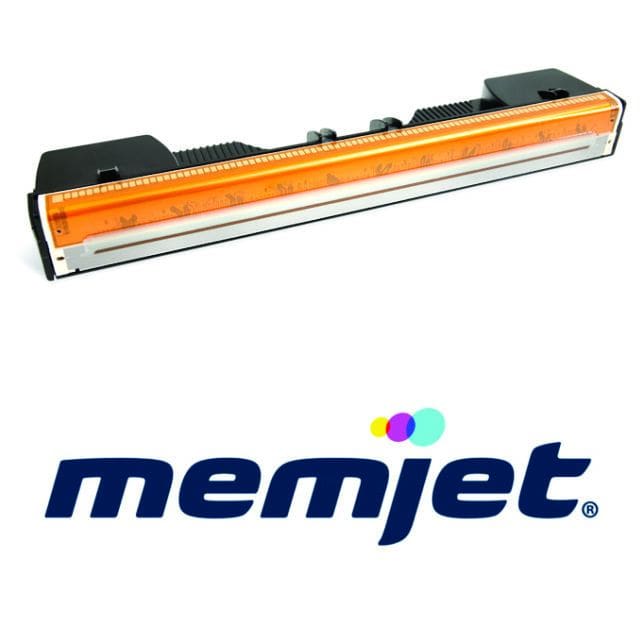We are proud to announce we are the "Afinia UK & Overall Dealer of the Year for 2024"
Before you get started
Before you start working through this advice we would like to stress that most of what you’ll see here is not in a manual somewhere or recommended by the manufacturer. Ultimately you should never touch a Memjet printhead as they are easy to damage. We however take the opinion that if you’re about to bin your print head, what have you got to lose?
This guide has been put together using our experience as trained Afinia / Memjet printer Engineers. We run these printers in house and have sold a lot of Memjet printers over the past 10 years so we’re sharing the little tips and tricks we use as well as advice to ensure you get the most from your Memjet printhead.
Memjet heads do not have any warranty and anything you try here is at your own risk. HD Labels hold no responsibility for any damage you cause. If you have any doubts please talk to one of our Engineers before you proceed.

What is a Memjet Printhead?
Memjet is a fixed printhead technology and the printhead itself is a user replaceable part that can be swapped in minutes. A Memjet head has around 70k nozzles and offers 1600dpi print resolution at speeds of 6 inches per second. 12 inches per second at 1600 x 800dpi. It’s 216mm wide and the beauty of Memjet print is that the only thing that moves during the print is the material. It’s quick, low cost and good quality. Looking after your Memjet head is what’s going to help you achieve this.
What can effect the quality / life of your Memjet Printhead?
-
Humidity / dehydration
-
Dirt / dust
-
Air locks / bubbles
-
Banding & flow lines
-
Wear
-
Temperature
There are different factors that can affect your print quality these can be environmental, physical or natural.
Humidity & dehydration
Your Afinia L901 printer needs to be in an environment with humidity levels between 30 – 80%. The closer to 50% the better. The reason for this is to reduce the amount of dehydration to the wiper roller and head itself when both in use and not is use. The capping station within the printer protects the print head when it is not in use but sometimes this isn’t enough on its own. If the wiper roller is drying out then this will draw moisture from the head out during cleans and can impact the head causing lines and sometimes damage.
What can you do to improve this?
You have the option of air conditioning or adding a humidifier to the room to better control the humidity. If you are getting lines in the print and they won’t clear you can try to add moisture to the wiper roller if you think it is dehydrated. You can manually add some deionised water to the roller by inspecting the sled and using a pipette put some drops along the length of the wiper roller. You should see this absorb into the roller and then carry out a quick clean and see if you get improvements.
Deionised water and NOT distilled water
This is very important and something we have seen customers get confused with. These are not the same thing and distilled water will contaminate your printhead and wiper roller. This will only make things worse inside your printer to the point where you might need to replace any components that have come into contact with the water.


Dirt & Dust
Dirt can play a big part in the longevity of a print head. The main sources of dirt are dust and debris from the printer environment that settles on the printer and material that is then passed into the machine and onto the printhead. This can block the nozzles and damage them. It’s important to understand that the print head has around 70,000 nozzles in that strip so they are very small and easily affected by dust and dirt.
What can be done?
Situate the printer in a location that has low traffic, make sure all media is bagged / boxed and only comes out of the bags when going to print. At the end of the day remove any media and bag it up until next use. Clean your machine regularly especially if using continuous materials that leave adhesive build up.
Air locks & bubble in the printhead or tubes
Air locks and bubbles are mainly caused when replacing the print head or replacing an ink cartridge. They cause a blockage in the print head and can cause certain colours to misprint. To resolve this you can run a “circulate ink” to see if it remedies the lock. You can also gently flick the ink tubes under the top cover to remove the bubbles. Lastly you can perform a system deprime and once this has finished push the printhead latch back down and let the printer reprime. The deprime option is not available on the L801 printers so you should carry out a removal of the print head and wait for the latch to release then push it back down.
Afinia L901 System Deprime – Good to help with removing air locks & bubbles >


< Afinia L901 Circulate Ink – Good to help with removing air locks & bubbles
Banding & Flow Lines
Banding is a visual impact to the print that occurs due to the physical make up of the print head combined with the speed of the print creating flow lines. It is more visible on certain colours and media but is most prominent on block colours.

Seen left is an example of banding creating a darker flow line in this part of the print, unfortunately there isn’t a lot that can be done to prevent this as it’s caused by the speed of print and the physical make up however it is more apparent in certain colours and on certain material so playing around with the paper type settings can improve this. Flow lines and banding do get worse when the print head has aged and begins to wear overtime.
Wear
Your print head will wear overtime and is a consumable product so this is expected but by following the above steps should help make it last and allow you to get the most from the head. Signs of wear usually look like scratching in the print. This is natural and usually occurs from dirt and debris over time but can be exacerbated by a dry wiper roller and a poor environment.
Temperature
The printer needs to be in an environment of between 15 – 30 Degrees Celsius working best at 20 -25 having temperatures too high and low affect ink flow and can put the motors under undue heat stress causing errors and potentially permanent damage. Memjet does use water based ink so if you’re printer is in freezing conditions the ink will start to freeze which of course will effect the quality.
Last efforts for head recovery
Sometimes once you’ve tried everything that has been suggested above and it just isn’t enough. You can try to physically wipe the head and/or soak the head if dehydration has taken place or some dirt won’t come off. The last option is to wipe the print head with a lint free cloth that has been dampened with deionised water to remove some dirt such as adhesive or tape. You must always wipe right to left and then only use the area of cloth once. Do not scrub the head!
If the Print head has become dehydrated you can soak the head in deionised water on a lint free cloth for a few hours / overnight then put it back into your machine, you only need enough deionised water to cover the bottom of the head where the nozzles are. See the image below.

Simple things to remember that will 100% extend your printhead life
-
Leave your printer on all the time. It will maintain temperature better and will periodically service the head to ensure the head is as good as it can be when you come to use it.
-
Replace the wiper roller each time you replace a head. If you wiper is dirty you can transfer this dirt onto your new head.
-
Keep on top of your printer servicing. Our engineers will clean the printers through when servicing. Cleaning all filters, waste ink pads and important components which will extend the life of your printer as well as the print head.











